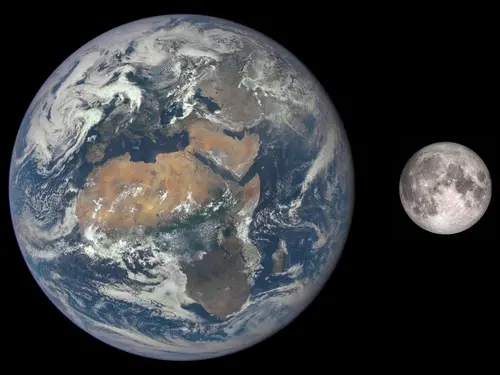
All Stories
Stories of daring, stories of technological feats, stories of prevailing against the odds ... these are the stories we tell at the National Air and Space Museum. Dive in to the stories below to discover, learn, and be inspired.
Showing 1 - 10 of 34

November 27, 2025
Flying Into the Eye of a Hurricane (For Science)
Turns out the best way to understand a hurricane is . . . to fly directly through it. We talk to members of the Air Force and NOAA Corps who take to the skies to gather vital weather data.

September 29, 2025
Can Two Planets Orbit Each Other?
Planets orbit the Sun, and moons orbit planets and other small planetary bodies, but can two planets orbit each other? The short answer to this question is yes, two planets could orbit each other in what is typically called a double planet or a binary planet system.

August 29, 2025
Why Is a Planet Not a Star?
Over 5,800 exoplanets have been discovered, with more and more being observed almost every day. But what makes these objects planets and not stars? How different are planets and stars, actually?

August 12, 2025
Do Other Planets Have Earthquakes and Volcanoes?
We have been able to directly measure quakes on the Moon and Mars and refer to them as moonquakes and marsquakes.

April 24, 2025
Bats!
Scientists and engineers are trying to use what they do know to create bat-inspired flying machines, but traits like bats' self-cambering stretchy wing skin, skeletal muscles and tiny hair sensors are proving difficult to replicate.

April 24, 2025
Bats!
Scientists and engineers are trying to use what they do know to create bat-inspired flying machines, but traits like bats' self-cambering stretchy wing skin, skeletal muscles and tiny hair sensors are proving difficult to replicate.

April 22, 2025
Where Are All the Impact Craters on Earth?
The Moon is pockmarked with impact craters. Everywhere you look, you can see a crater. On Earth, however, impact craters are few and far between, with barely any visible. Why do we see so many craters on the Moon but so few on Earth?

April 03, 2025
Early Rocket Societies
Beginning in the late 1920s, spaceflight enthusiasts banded together into groups known as "rocket societies" to advance their cause.

December 18, 2024
How Active Volcanoes Can Put Airplanes in Danger
A global warning system keeps active volcanoes from shutting down commercial aviation.

December 18, 2024
That Time We Bombed a Volcano
In 1935, a squad of U.S. bombers dropped a total of 20 of the 600-pound bombs on the lava channels in the Mauna Loa volcano in Hawaii.